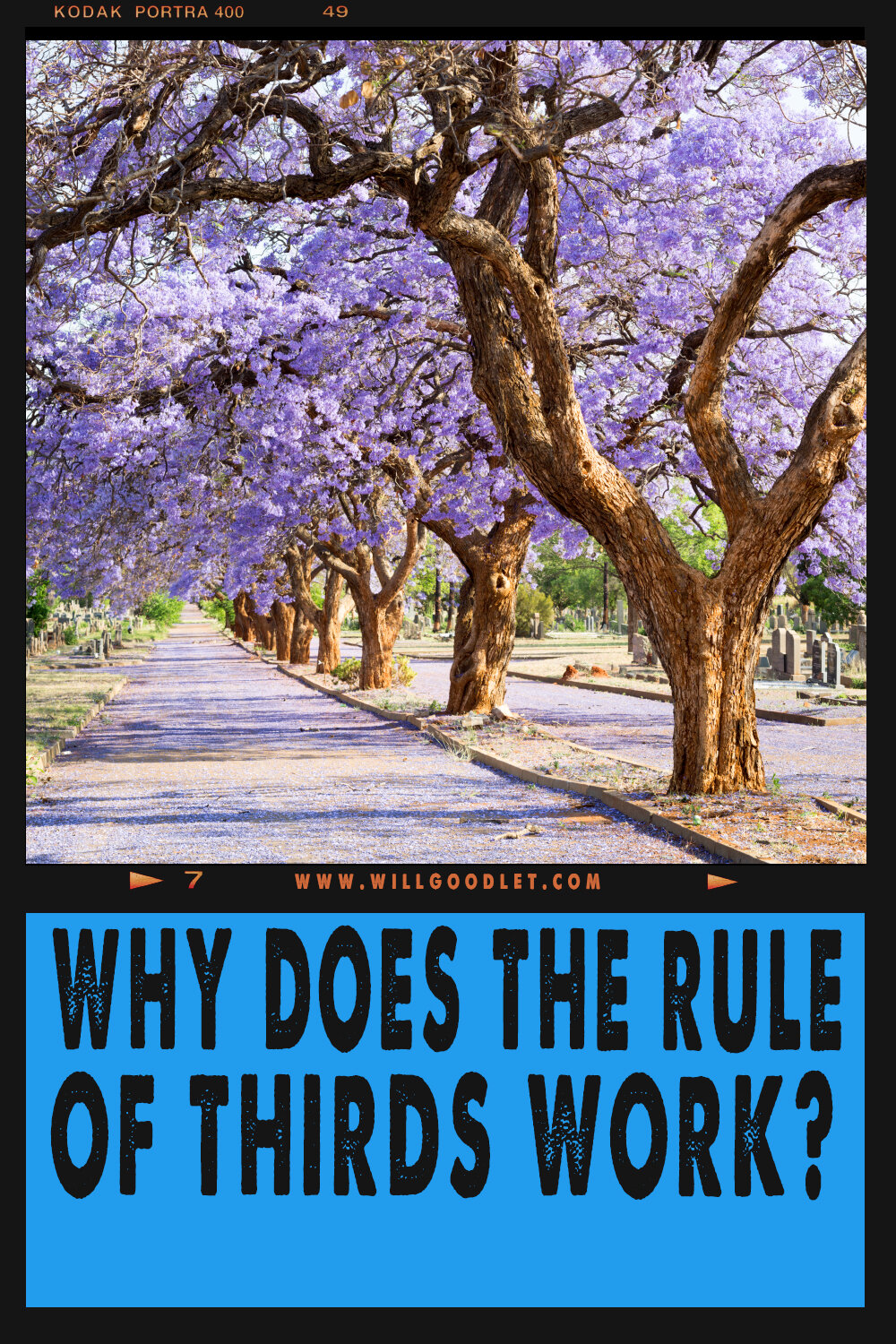Why Does the Rule of Thirds Work in Photography?
We hear a lot about the Rule-of-Thirds in photography but I have always thought it deserves a little more investigation.
As photographers, we often come to this hobby/profession/disease from backgrounds that do not involve much training in Art or the History of Art.
And that’s fine!
But it does also mean we have to learn composition and compositional tools as laypeople rather than as trained artists.
I see articles about the Rule-of-thirds as a compositional tool all over the place. But I hardly see any that actually explain where the idea comes from and why it supposedly works!
If we stop and think for a minute, maybe just taking something as a natural law of art is not the best idea. It may even be a worse idea if we consider that every other photographer in the world is applying the same principles of composition!
When the Rule-of-thirds was first described it was groundbreaking but that was over 250 years ago, perhaps we have moved on?
I’ve thought a lot about photographs and I have decided that they are simply rectangular (usually), two-dimensional objects that have varied splotches of colour and tonality applied to their surface..
If one thinks about that for a second it should reveal a couple of key insights:
The rectangle is by far the most important compositional component in any normal image (ok calm down Hasselblad 6x6 shooters!).
The splotches of colour are entirely meaningless to most other species on earth and presumably would be meaningless to most aliens too.
What do I mean?
Simply this: We humans share (for the most part) a similar ‘visual language’ that allows us to look at this weird two-dimensional object with splotches and infer meaning.
It is the study and interpretation of this visual language that we photographers are engaged upon. We aren’t doing it with science, like psychologists, we are doing it by trial and error, reaction and response - and we are doing it day-by-day and image-by-image!
So why is it that the Rule-of-thirds seems to work for many of us? Why do we respond positively rather than with visual confusion?
The Origins of the Rule-of-Thirds
George Field noted in 1845 that Sir Joshua Reynolds (a famous portrait painter) "has given it as a rule, that the proportion of warm to cold colour in a picture should be as two to one although he has frequently deviated therefrom; and [John Thomas] Smith, in his Remarks on Rural Scenery, would extend a like rule to all the proportions of painting, begging for it the term of the 'rule-of-thirds', according to which a landscape, having one third of land, should have two thirds of water, and these together, forming about one-third of the picture, the remaining two thirds to be for air and sky; and he applies the same rule to the crossing and breaking of objects." [George Field (1845). Chromatics; or, The analogy, harmony and philosophy of colours.]
So it seems that painters started producing work to a structure of thirds and that this structure went beyond what we generally do in photography (the alignment of objects and ‘visual mass’) and went into breaking down objects by type, went into breaking down tones by coolness or warmth and continued with breaking objects into thirds.
Harwich Lighthouse, John Constable, 1820 via Wikimedia Commons
Light and dark, lines broken in thirds, warm and cool...this picture by John Constable exhibits the Rule-of-thirds.
It was interesting to me that painters went so far, but when I thought about it a little it made perfect sense.
You see, painters have some significant tools that photographers do not have. Painters can present a scene that exists (preconceived) in their mind, constructing it as they wish. As photographers, we are confronted with the scene and instead, we interpret it through compositional techniques and sometimes with post-production tools.
These days, in photography, the rule-of-thirds breaks an image into 9 equal parts by dividing the long and short sides of the image into three. It is generally believed that aligning the major components of the image along these lines produces images with more energy and interest than a centred object.
But why is that the case?!
Well, the short answer is that we don’t know. Although some have postulated that it relates to Rabatment.
A lioness shaking in the rain, Kruger National Park.
Rabatment of the Rectangle
Rabatment of the Rectangle is a geometric technique used to divide space in a rectangle. It may also be such a basic part of our perception (our visual language) that we complete the Rabatment translation subconsciously without even thinking about it and look for patterns to reinforce our perception.
It's interesting to note, that although Rabatment can be applied to any rectangle, when it is applied to the 2:3 ratio found in 35mm cameras, it aligns exactly with the Rule-of-thirds.
By Binksternet - Own work, CC BY-SA 3.0, https://commons.wikimedia.org/w/index.php?curid=14…
The GIF above shows the geometric translation necessary to perform a Rabatment. Basically, we are breaking our rectangle up subconsciously into little squares!
In western cultures reading left-to-right, attention is often focused on the right-hand Rabatment. Conversely, in eastern cultures, the eye focuses on the left-hand Rabatment - one of the many small areas where our shared visual language is different.
Here's an image employing Rabatment and the Rabatment diagonals. You can see, that in this case, the Rabatment corresponds with the positioning for the rule-of-thirds. However, the second point of interest is not on one of the rule-of-thirds focal points, merely close to it - but crucially, it is close enough to reinforce structure in the composition.
Jacarandas trees in flower, Will Goodlet.
The right-hand Rabatment (drawn in black) aligns with the trunk of the closest tree. The diagonal drawn between the bottom left corner and top of the right Rabatment square aligns with the edge of the hanging blossom. While the left hand Rabatment diagonal (drawn in red) aligns exactly with the branch of the tree and the right-hand corner of the image.
What do you think about the geometry evident in this image? Does it work with the other visual cues that are present? Does it mean anything at all?















